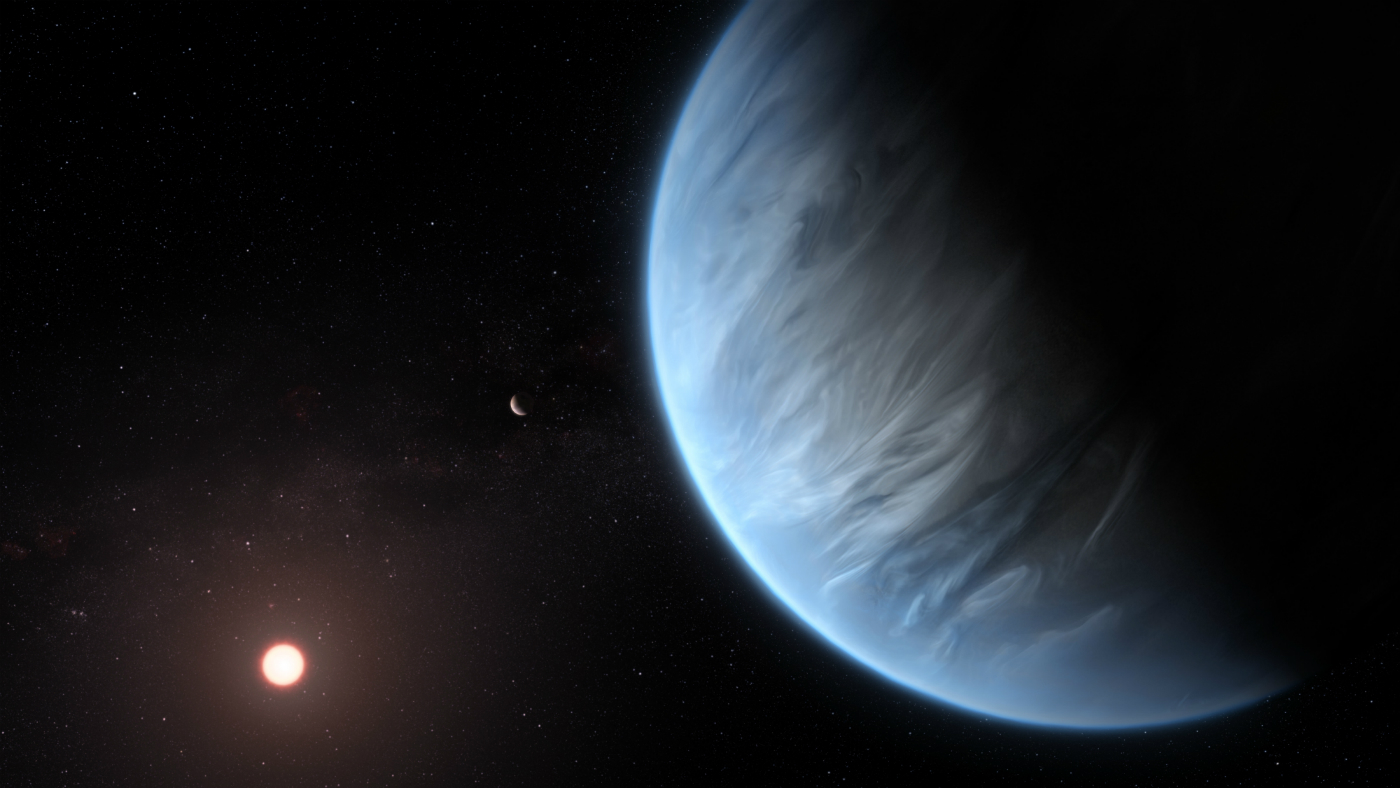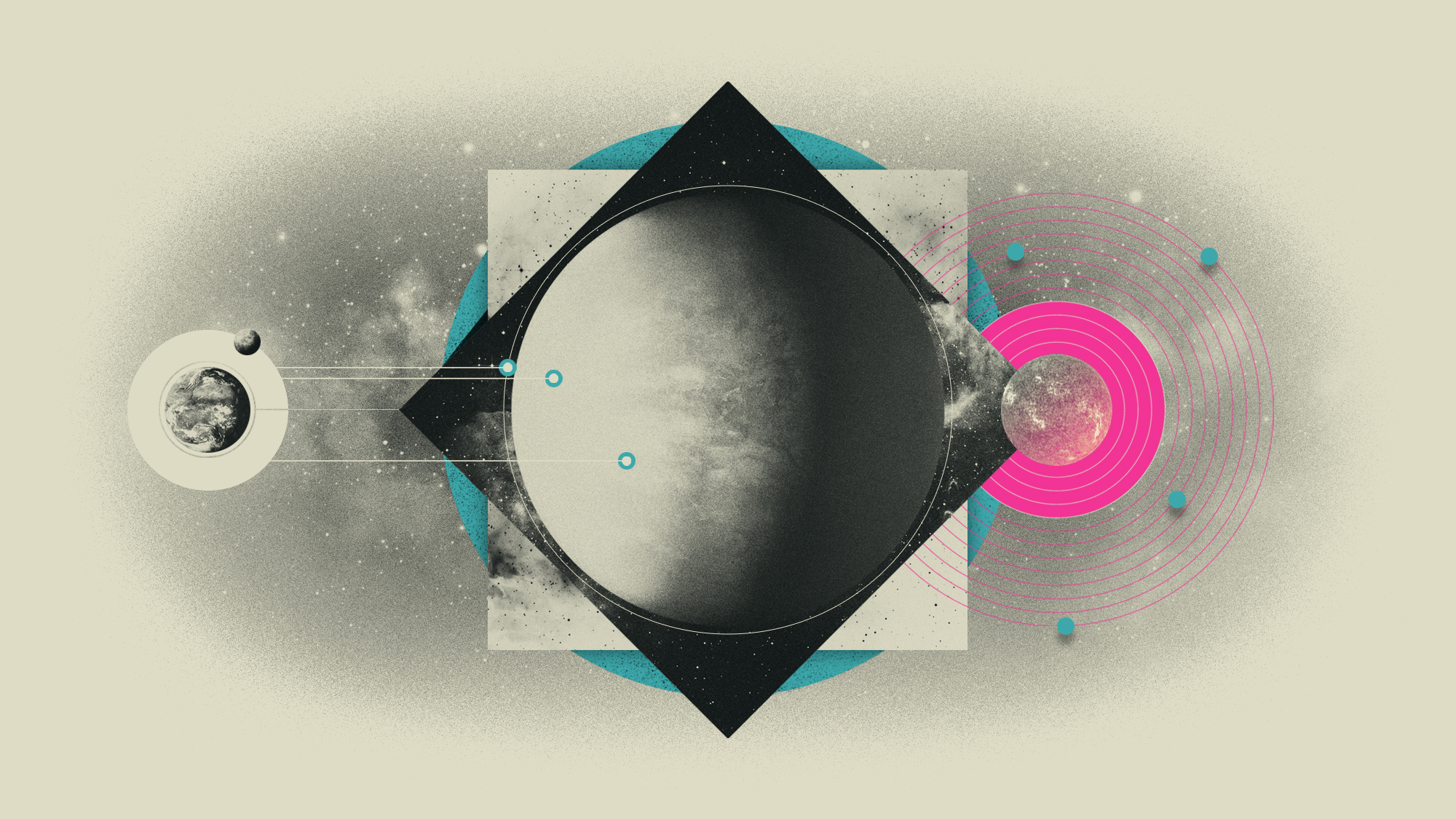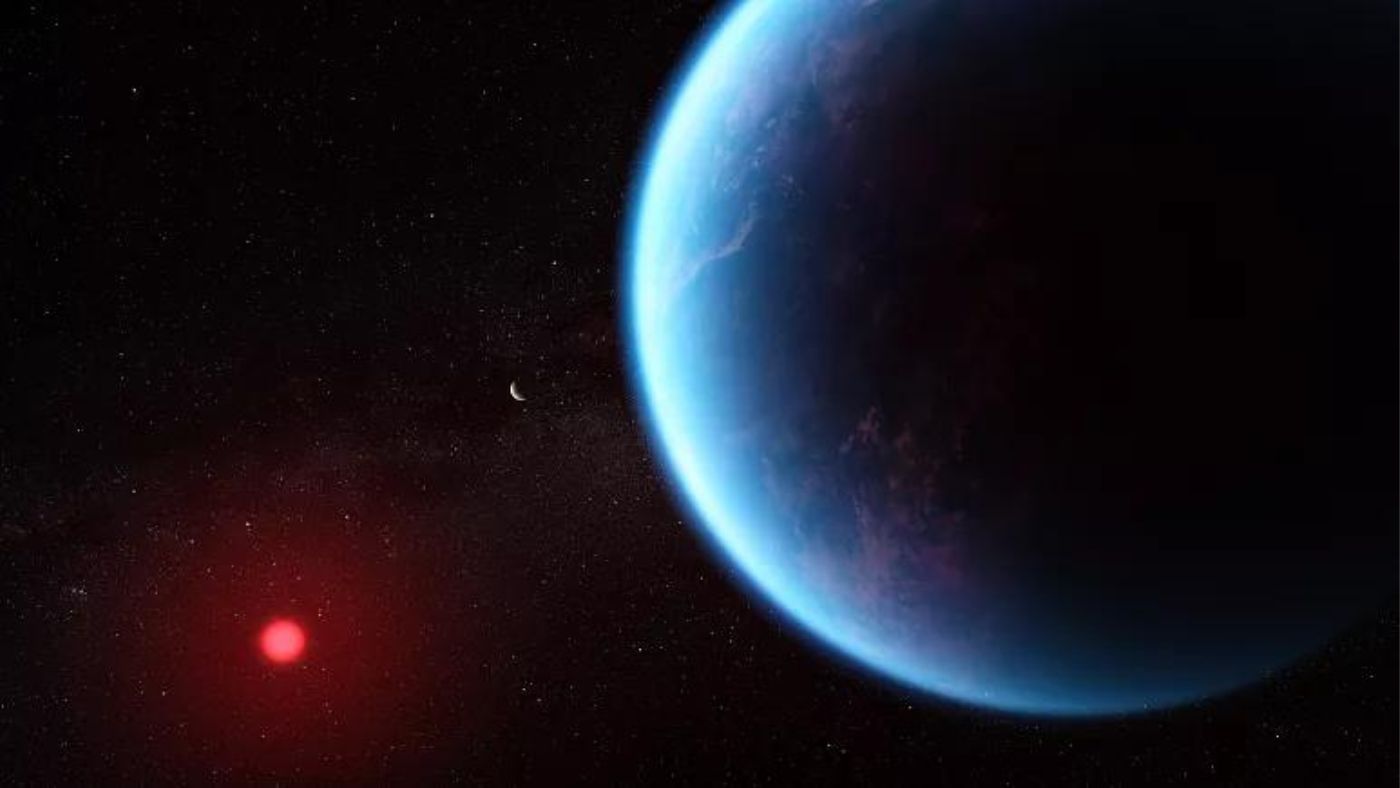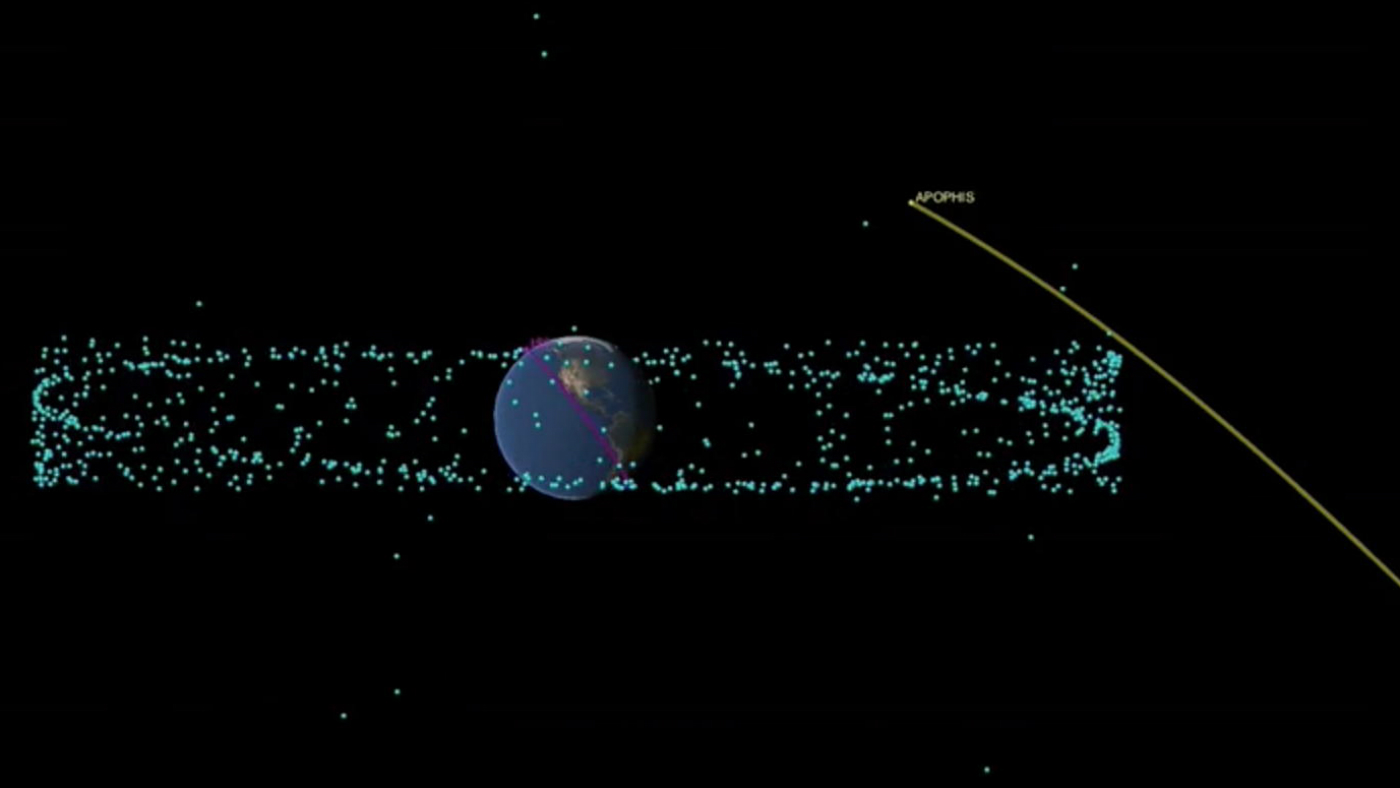K2-18 b: distant planet is the ‘best candidate for life’
Scientists discover water vapour on ‘potentially habitable’ exoplanet

Scientists have discovered water vapour in the atmosphere of an exoplanet 110 light years from Earth, raising hopes of a breakthrough in the search for other habitable worlds.
The experts, from University College London (UCL), this week announced that Hubble Space Telescope imaging has revealed water droplets and clouds in the atmosphere of K2-18b, a distant planet in the constellation Leo.
K2-18b is the first planet discovered to both harbour liquid water and also reside in the habitable - or “Goldilocks” - zone of its star, reports The Guardian.
The Week
Escape your echo chamber. Get the facts behind the news, plus analysis from multiple perspectives.

Sign up for The Week's Free Newsletters
From our morning news briefing to a weekly Good News Newsletter, get the best of The Week delivered directly to your inbox.
From our morning news briefing to a weekly Good News Newsletter, get the best of The Week delivered directly to your inbox.
“This is the first potentially habitable planet where the temperature is right and where we now know there is water,” said study co-author Angelos Tsiaras. “It’s the best candidate for habitability right now.”
So just what have scientists found and how will it affect the hunt for extraterrestrial life?
What is K2-18b?
Discovered in 2015 by Nasa’s Kepler space telescope, K2-18b - also known as EPIC 201912552 b - is more than eight times the mass of Earth and twice the size. This means it is likely to be either an “icy giant like Neptune or a rocky world with a thick, hydrogen-rich atmosphere”, National Geographic says.
A free daily email with the biggest news stories of the day – and the best features from TheWeek.com
The exoplanet orbits a red dwarf star - called K2-18 - that is considerably smaller than our sun, but crucially it falls within the star’s habitable zone, which the magazine describes as “the range of orbital distances where it would be warm enough for liquid water to exist on a planet’s surface”.
Nasa estimates that there could be as many as 40 billion Earth-sized planets orbiting in the habitable zones of stars around the universe. But K2-18b has piqued scientists’ interest because of the presence of water vapour in the planet’s atmosphere, making it the only exoplanet known to have both water in its atmosphere and temperatures that could sustain liquid water on a rocky surface.
How are scientists interpreting the findings?
Using Hubble images of starlight filtered through K2-18b's atmosphere, researchers at UCL were able to confirm the presence of water vapour in the atmosphere along with hydrogen and helium.
A statement on Nasa’s website adds that the scientists involved in the study “believe that other molecules, including nitrogen and methane, may be present but they remain undetectable with current observations”, and thus further studies are required to estimate cloud coverage and the percentage of atmospheric water present.
The findings have sparked interest in the scientific community over the potential of the planet to host life. A second team of researchers, who confirmed the results of the UCL study, led by Bjorn Benneke of the University of Montreal, said: “The planet’s predicted temperature provides the right conditions for liquid water and complex organic molecules, a condition generally regarded as necessary for the existence of life as we know it.”
Can it support human life?
Almost certainly not. While Giovanna Tinetti, a member of the UCL team, describes the results as a “great surprise”, the team are keen to stress that the chances of K2-18b being able to sustain human life are still extraordinarily slim.
For a start, the planet’s considerable mass and size would make its gravity significantly stronger than Earth’s, while the high level of activity recorded on the surface of its parent star indicates that it is being bombarded with deadly levels of radiation.
The findings of the study were also not specific enough to make any definitive claims about sustainable life on K2-18b, with scientists finding that the atmospheric water content is between 0.1% and 50%. This means the planet could play host to a wide range of landscapes, from mostly arid to almost entirely water.
The Times reports that “other possibilities include a kind of mini-Neptune, with a rocky core encased in ice” and “a thick, water-rich atmosphere might have given rise to a runaway greenhouse effect, similar to Venus”.
Researcher Angelos Tsiaras said the results were “very exciting” but that realistically it has reminded us “that this is our only home. And it’s probably out of the question whether we’ll ever be able to travel to other planets”, The Independent says.
Ingo Waldmann, a researcher on the team, says: “It’s maybe not quite your vacation destination just yet.”
-
 How to financially prepare for divorce
How to financially prepare for divorceThe Explainer Facing ‘irreconcilable differences’ does not have to be financially devastating
-
 Why it’s important to shop around for a mortgage and what to look for
Why it’s important to shop around for a mortgage and what to look forThe Explainer You can save big by comparing different mortgage offers
-
 4 ways to save on rising health care costs
4 ways to save on rising health care costsThe Explainer Health care expenses are part of an overall increase in the cost of living for Americans
-
 'Super Earth': the exoplanet in the 'habitable zone' for alien life
'Super Earth': the exoplanet in the 'habitable zone' for alien lifeThe Explainer HD 20794 D is located in the 'habitable zone' of a star similar to our Sun
-
 Eclipses 'on demand' mark a new era in solar physics
Eclipses 'on demand' mark a new era in solar physicsUnder the radar The European Space Agency's Proba-3 mission gives scientists the ability to study one of the solar system's most compelling phenomena
-
 Dark energy data suggest Einstein was right
Dark energy data suggest Einstein was rightSpeed Read Albert Einstein's 1915 theory of general relativity has been proven correct, according to data collected by the Dark Energy Spectroscopic Instrument
-
 9 recent scientific breakthroughs and discoveries
9 recent scientific breakthroughs and discoveriesIn Depth From curing cancer to preventing rhino extinction
-
 The hunt for Planet Nine
The hunt for Planet NineUnder The Radar Researchers seeking the elusive Earth-like planet beyond Neptune are narrowing down their search
-
 Antimatter isn't immune to gravity, landmark experiment confirms
Antimatter isn't immune to gravity, landmark experiment confirmsSpeed Read Antimatter is the mysterious evil twin of matter, but new research proves they do have something fundamental in common
-
 K2-18b: the exoplanet that could have signs of life
K2-18b: the exoplanet that could have signs of lifeThe Explainer Scientists may have discovered evidence of farts from alien marine creatures 120 light years away
-
 What is the God of Chaos asteroid?
What is the God of Chaos asteroid?In Depth Nasa investigating impact scenarios for massive space rock set to pass ten times closer to Earth than our moon